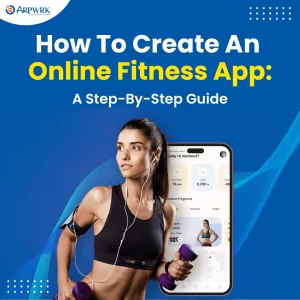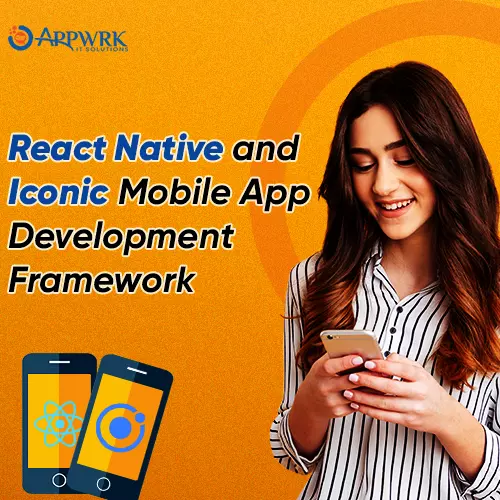How To Create An Online Fitness App: A Step-By-Step Guide
In today’s fast-paced, connected world, maintaining a regular fitness routine can be challenging. However, the advent of fitness applications has dramatically altered the landscape, making it possible for individuals to manage and improve their health from the convenience of their smartphones. These apps have revolutionized fitness routines, offering a host of features such as personalized workout plans, real-time tracking, dietary advice, and much more.

The growing emphasis on health and wellness, amplified by the recent global COVID-19 pandemic, has made fitness apps an integral part of our lives and, consequently, a promising market for developers and businesses. The growth and popularity of the health and fitness industry have made fitness app development an exciting and lucrative venture. Whether you’re a fitness enthusiast with a vision, a personal trainer hoping to reach a broader audience, or a business aiming to tap into the booming market, understanding the ins and outs of fitness app development is crucial.
Aspiring to develop your own fitness app? You’re in the right place. This all-inclusive guide will cover all the aspects needed for fitness app development, from market insights and top trending fitness apps to types, features, tech stack, and much more! Moving forward, we will introduce you to the top-notch fitness app development company that will make your fitness app development journey smoother!

Table of contents
- Let’s Dive Into Fitness App Market Insights
- What Are The Top 5 Most Successful Apps?
- Various Types Of Fitness Training Apps
- Must-Have Features To Create The Best Fitness Tracking Apps
- Add More Features To Your Fitness App
- How To Make Money Through Online Health And Fitness App
- Follow These Steps To Create Your Own Personal Training Software
- Technology Stack Used In Health And Fitness App Development
- How Much Does It Cost To Create The Best Fitness Tracking Apps
- APPWRK IT Solutions – Create An Astonishing Personal Trainer App With Our Experts!
- Conclusion
- FAQs
Let’s Dive Into Fitness App Market Insights
According to the data provided by Statista:
- The global fitness app segment market revenue is projected to reach US $19.33 billion in 2023.
- It is expected to show an annual growth rate (CAGR 2023-2027) of 14.34%, resulting in a projected market volume of US $33.04 billion by 2027.
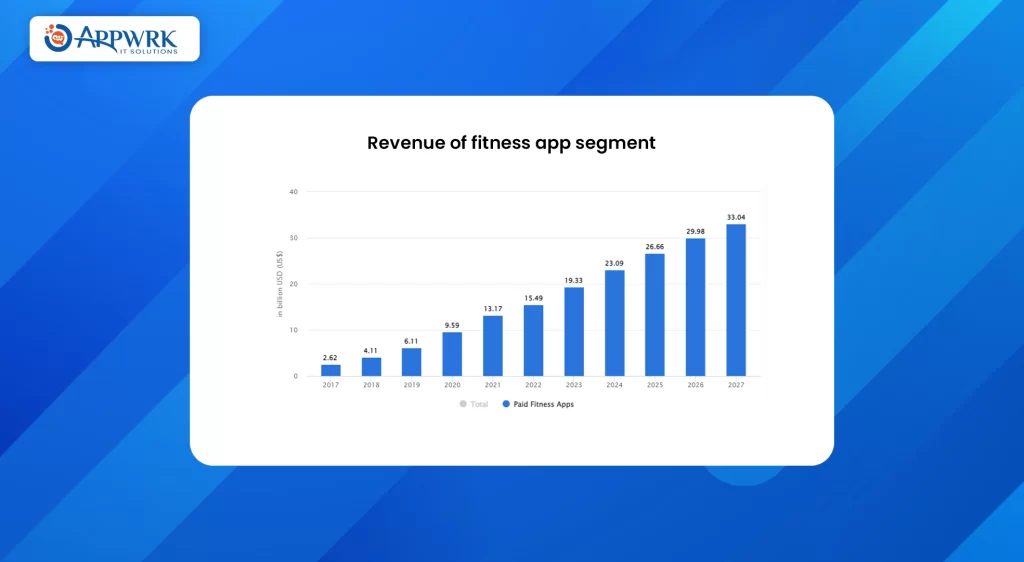
Let’s check out some other insights that will help you understand the buzz created by fitness apps all over the world.
- Undoubtedly, the COVID-19 pandemic surged the popularity of fitness apps. Can you imagine health and fitness app downloads grew by 46% worldwide between Q1 and Q2 in 2020?
- Not only this, fitness apps also saw a rise in daily active users which increased by 24% from Q1 to Q2, along with a surge in downloads
What Are The Top 5 Most Successful Apps?
When considering the fitness app market, several standout applications have garnered wide popularity, success, and user engagement:
Calm
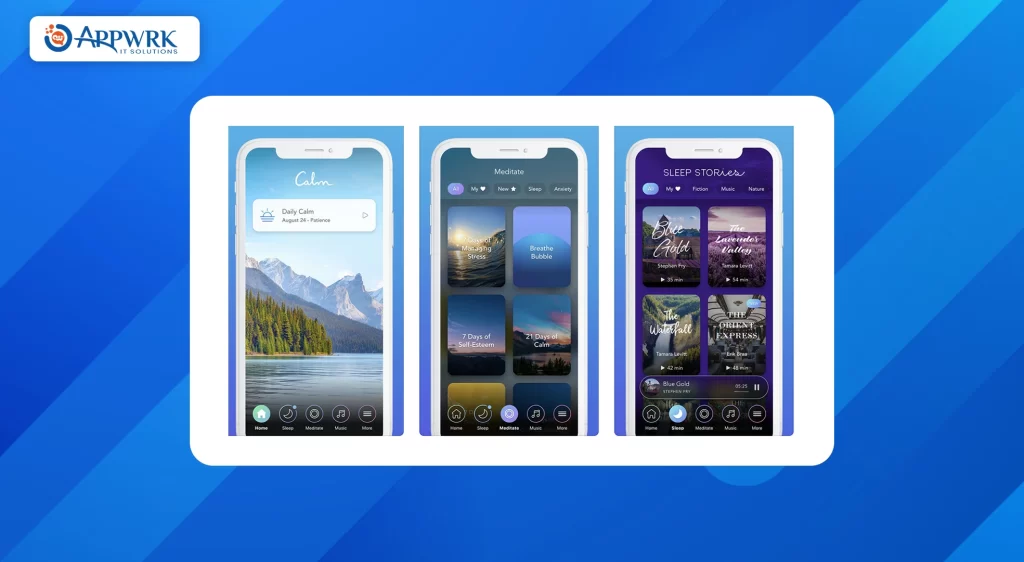
One of the top-notch apps for meditation and sleep, the Calm app (Android, iOS) aims to improve users’ health and happiness. It offers a broad array of guided meditations, relaxing sleep stories, calming music, and more to help users manage stress and enjoy a more restful night’s sleep. Furthermore, this app includes video lessons and audio programs from world-renowned mindful experts.
MyFitnessPal
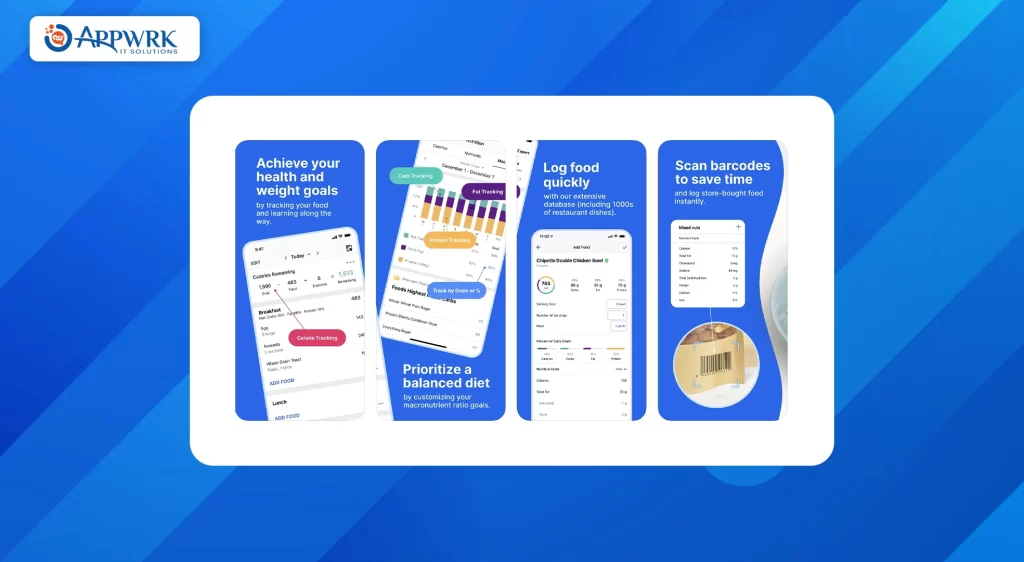
Known for its comprehensive food database, MyFitnessPal (Android, iOS) makes counting calories and tracking nutrition incredibly easy. This app also helps users to scan barcodes through which they can save different meals and recipes even for their future reference. Additionally, it enables users to track their workouts, set personal health goals, and connect with a supportive community, which is available 24/7.
Fitbit
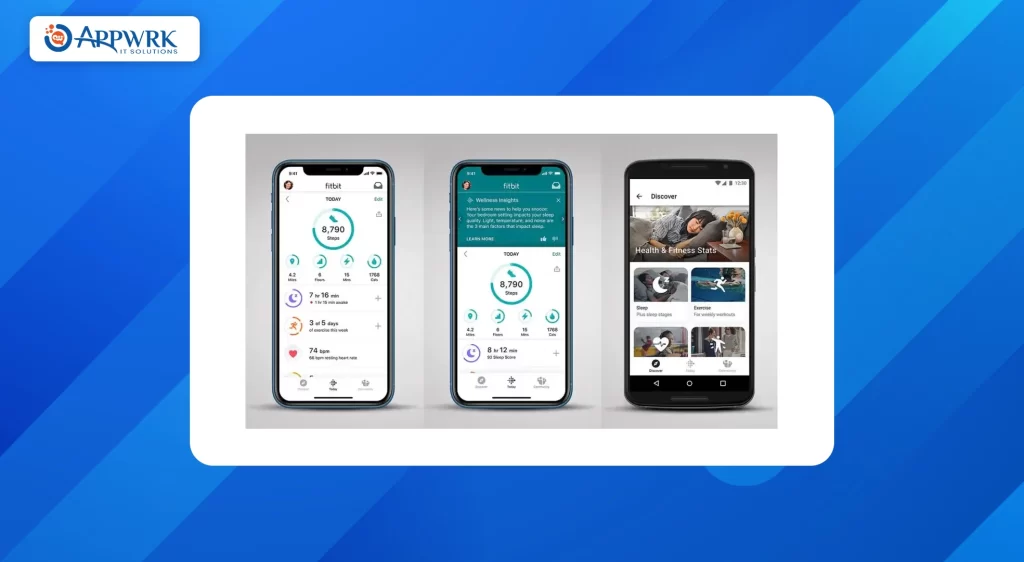
One of the leading apps for health and fitness, the Fitbit app (Android, iOS) helps to connect users with their wearables so that they can track steps, sleep patterns, and heart rates. It not only provides its users with tracking benefits but also has customized health programs, mindfulness content, and video workouts that can be done at home. Undoubtedly, the app provides users with an enhanced experience with a detailed look into their fitness data.
Peloton

One of the best workout apps, the Peloton app (Android, iOS) allows users to work out anytime and anywhere without any equipment. This app offers a range of live and on-demand workout classes, including cycling, running, strength, and yoga. It provides a virtual yet immersive fitness experience with high-quality trainers. It also provides various advanced filters through which they can select the duration of the class, difficulty, and music type.
SWEAT

Founded by Australian fitness trainer Kayla Itsines, the SWEAT app (Android, iOS) is one of the most popular apps among women as it provides workout programs tailored for women. The app includes meal plans, fitness tracking, and community support, encouraging a comprehensive approach to health and wellness.
Various Types Of Fitness Training Apps
Activity Tracking Apps
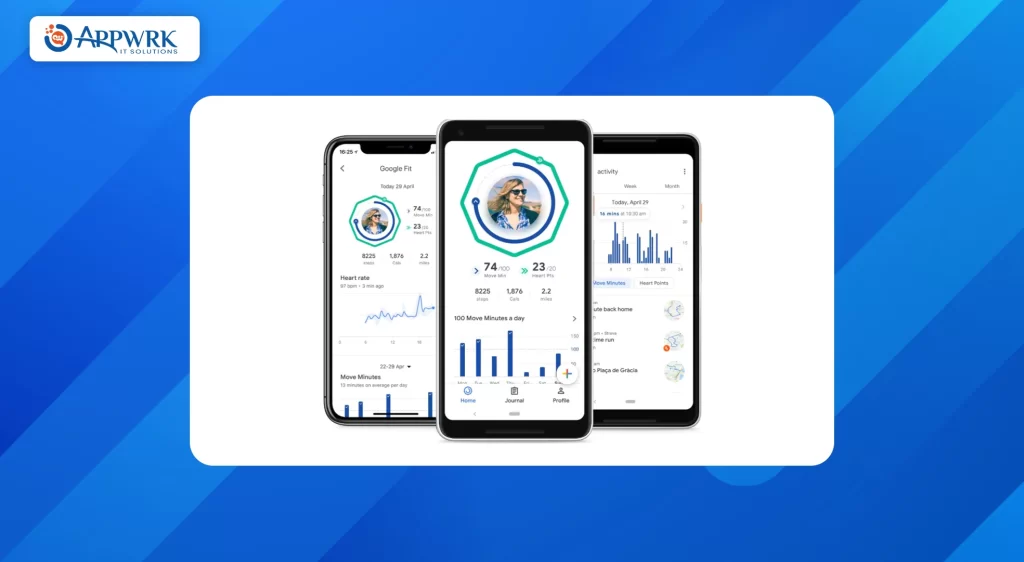
Activity tracking applications utilize a smartphone’s inbuilt sensors or connect with wearables to record various physical activities throughout the day. They typically monitor metrics such as steps walked, distance run or cycled, floors climbed, and calories burned. Some sophisticated apps even track heart rate, sleep patterns, and menstrual cycles. These data insights provide users with a holistic view of their physical activities, allowing them to make informed decisions and meet their fitness goals.
Examples of activity-tracking apps include Fitbit (Android, iOS).
Diet And Nutrition Apps

Diet and nutrition applications serve as digital dieticians, helping users maintain healthy eating habits. They often include features for logging food intake, counting calories, scanning barcodes for nutritional information, and tracking water intake. Some advanced apps even offer personalized diet plans, recipe suggestions, and macro/micronutrient breakdowns. By maintaining a food diary, users can easily monitor their eating habits and make necessary adjustments towards a healthier lifestyle.
MyFitnessPal (Android, iOS) is a popular example in this category.
Workout Apps
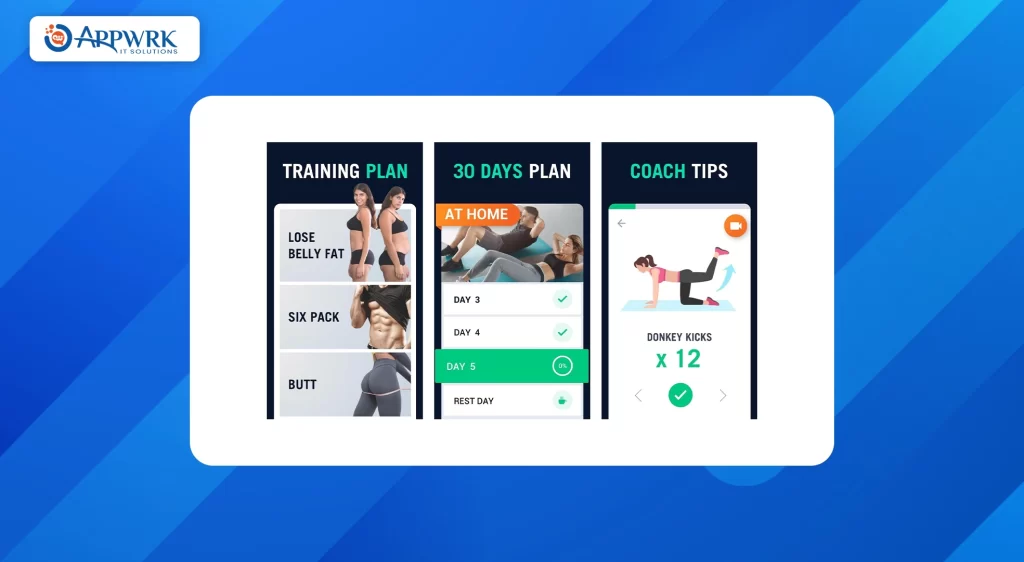
Workout apps are digital personal trainers offering diverse workout routines that can be followed at home, outdoors, or in the gym. Workout apps often provide guided exercise videos, customizable fitness plans, progress tracking, and sometimes even virtual challenges with other users. They cater to a range of fitness levels and styles, from yoga and Pilates to high-intensity interval training (HIIT) and weightlifting.
Nike Training Club (Android, iOS) is a standout app in this category.
Must Have Features To Create The Best Fitness Tracking Apps
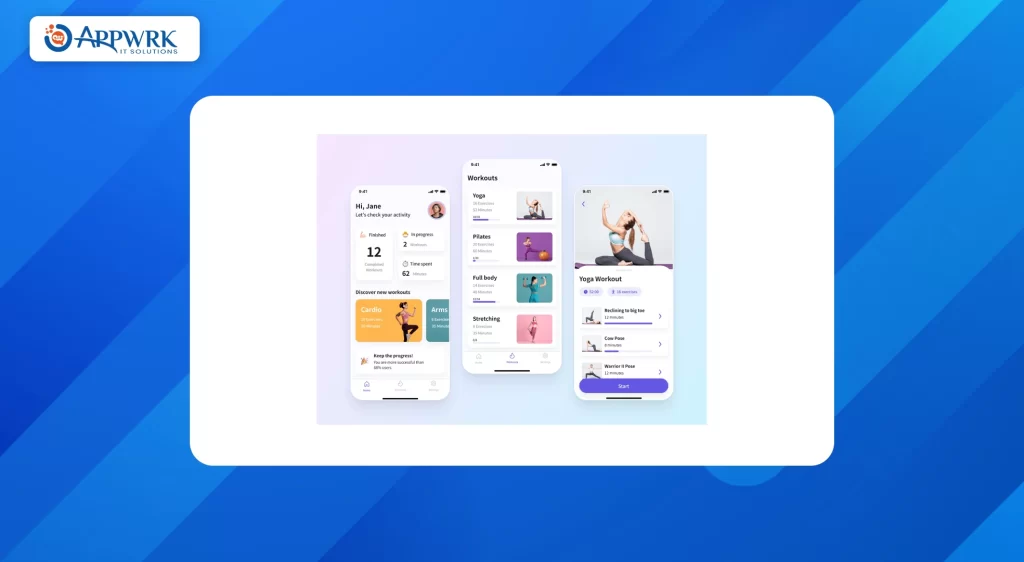
To deliver an effective and engaging fitness app, these are some essential features you need to consider during health and fitness app development:
Sign Up And Log In
The users can easily register and create a unique user profile through email IDs, passwords, and phone numbers. You can also simplify this process by offering sign-up options through existing platforms like Google, Facebook, or Apple. Moreover, it is important to ensure data privacy and security measures should be clearly communicated to the users through the app.
Personal Account/User Profile
Users can input personal information like age, gender, weight, height, and fitness goals. This data allows for a personalized user experience and more accurate tracking and recommendations. Users should also be able to view their activity history and progress toward goals in their profile.
Third-party Device Connectivity
Fitness apps become truly powerful when they can sync data from various fitness devices and wearables. Whether it’s a smartwatch, a heart rate monitor, or a smart scale, enabling integration ensures users have all their health data in one place.
User Activity Tracking
User activity tracking functions in fitness apps can record and analyze a user’s physical activities. From running distances to calories burned to sleep patterns and heart rate, the more comprehensive the tracking, the more valuable insights a user can gain through this fitness app feature.
Geolocation
GPS tracking is essential for outdoor activities like running, cycling, or hiking. So, the personal training apps should have a geolocation feature that can allow users to map their routes, measure distances, and even share their favorite routes with the community.
Notifications And Reminders
Push notifications feature in the fitness trainer app act as personal fitness reminders, encouraging users to keep up with their routines, celebrate progress, and stay motivated. This feature can also alert users about new app updates, features, or community challenges.
Add More Features To Your Fitness App
Goal Setting
This feature allows users to define and monitor their fitness objectives. Goals might include losing a certain amount of weight, running a specific distance, lifting a particular amount of weight, or maintaining a daily streak of activity. A well-designed app will let users customize their goals, track their progress visually, and adjust their goals as they improve.
Educational Content Or Video Tutorials
Providing educational content or video tutorials featured in your personal fitness app will allow users to access helpful articles, workout guides, nutrition tips, and instructional videos. Educational content helps users understand the purpose of different exercises, the importance of nutrition, and tips for maintaining a healthy lifestyle. Video tutorials, on the other hand, are excellent for demonstrating correct exercise form and technique, thus reducing the risk of injury and helping users get the most out of their workouts.
Gamification
The gamification feature in home fitness apps involves adding game-like elements to make the app more engaging and motivational. This can include rewards for achieving goals, badges for reaching milestones, leaderboards to encourage competition or challenges that users can participate in. Gamification can significantly boost user engagement, making workouts more enjoyable and motivating users to keep coming back.
Social Media Integration
The social media integration feature allows users to connect their apps to their social media accounts, like Facebook, Instagram, and Twitter, making it easy for them to share their achievements, challenges, or favorite workouts with their friends and followers. It also enables them to invite friends to join them in challenges or workouts, which can encourage more regular use of the app and foster a sense of community.
How To Make Money Through Online Health And Fitness App

You can utilize several revenue models to monetize your health and fitness application. Here are a few effective strategies:
Paid Apps
This revenue model involves charging users a one-time fee to download and use your app. While this can provide initial revenue, keep in mind that the price point can be a barrier for many users used to free fitness apps.
In-app Purchases
This monetization method allows users to download the app for free and then pay for additional features, services, or virtual goods within the app. You can give access to premium workouts, personalized diet plans, or ad-free experiences through the premium plans.
Freemium
The freemium model is a combination of the free and paid versions. Through this model, users will be able to download the app for free and use basic features. To access advanced features or content, users will need to upgrade to a premium subscription. This can be a monthly, quarterly, or yearly recurring fee. Freemium can help you earn extra income through a premium subscription easily.
Ads
Displaying in-app advertisements is another common revenue model. You can earn revenue from banner ads, interstitial ads, video ads, or sponsored content. You can charge for every ad that is displayed on your fitness app and earn extra income.
Sponsored Content
This involves partnering with other companies or brands to provide users with special content, offers, or features. For example, a fitness app might partner with a sports brand to create exclusive workouts or challenges, with the brand paying to have its products featured or promoted within the app.
Follow These Steps To Create Your Own Personal Training Software
Step 1: Market Research/ Choose Platform
Before diving into the development process, you should conduct thorough fitness app market research. Identify your target audience, understand their needs and preferences, analyze your competitors, and determine what features and functionalities are most valuable in building the best personal trainer app. This will guide the development of your app and ensure it meets market demands.
Once you’ve identified your target audience and unique selling proposition, the next step is to choose a platform for your app, iOS, Android, or both? Consider factors like your audience’s preferred devices, the pros and cons of each platform, and your development budget.
Step 2: Prototype & User-test
With a clear understanding of your target market and chosen platform, you can now begin prototyping your app. A prototype is a preliminary model of your app that outlines the basic structure and functionality. Use wireframes to outline the user interface, including the layout, navigation, and interaction.
Once your prototype is ready, it’s time for user testing. Get feedback from a small group of your target audience. Their feedback can provide valuable insights into usability, functionality, and overall user experience, helping you refine and improve your app.
Step 3: Choose The Tech Stack
The technology stack refers to the combination of programming languages, frameworks, and tools used to build your app. Your tech stack will impact your app’s performance, scalability, and security.
There are many choices available, from native development tools like Swift (for iOS) and Java (for Android) to cross-platform frameworks like React Native or Flutter. You’ll also need to decide on your backend technology, which might include a language like Python or Ruby, a database like PostgreSQL or MongoDB, and a server like Apache or Nginx. The choice largely depends on your team’s expertise, your budget, and your app’s specific requirements.
Step 4. Build And Test, Rinse And Repeat
This phase involves actual coding and development. Your team will translate your refined prototype into a fully-functional app, implementing all the features and functionalities you’ve planned.
Throughout this process, regular testing is crucial. Conduct unit testing, integration testing, and user acceptance testing to identify and fix bugs. This iterative process of building, testing, and refining ensures your final product is as polished and error-free as possible.
Step 5: Release And Maintain
Once your app is fully tested and refined, it’s time to release it to the market. This involves submitting your app to app stores and promoting it to your target audience.
But the process doesn’t end with the release. Maintaining your app is crucial to its long-term success. Monitor user feedback, fix bugs, make necessary updates, and regularly add new features to keep your app relevant and engaging. This ongoing commitment to quality and improvement will help you retain users and attract new ones.
Technology Stack Used In Health And Fitness App Development
Choosing the right tech stack for fitness tracker app development is essential. The tech stack depends on factors like target audience, application goals, industry-specific requirements, and third-party integrations.
There are three main components of the technology stack:
Front-end Technology Stack
Front-end technology stack is for the clients, i.e., the customers can see and engage with your fitness app. It is responsible for the mobile app’s design and navigation, providing a rich user experience and seamless user interface.
Back-end Technology Stack
Back-end technology stack is for the server side of software development. It refers to the app’s inner workings, which the users cannot see.
The table below mentions the best-suited front-end and back-end technology for fitness app development.
| Front-end | HTML 5, CSS3, JavaScript, Angular js, Vue.js – for web client Kotlin – for Android app Swift – for iOS app |
| Back-end | Ruby (Ruby on Rails framework), Phoenix (elixir framework) Python (Django, Flask), PHP (Lavarel, Codelgniter) |
Third-party Integrations
Integrating third-party services can enhance your app’s functionality and improve user experience. Some essential third-party integrations for fitness app development include:
- Google Location API (Android), Core Location (iOS)
- Google Maps Android IP, MapKit (iOS)
- Google Directions API
- Google Places API
- Twilio Communications
- Google Cloud Messaging (Android), Apple Push (iOS)
- FitBit Friends API
- ELCIES
- Walgreens Balance Rewards
- Stripe, PayPal’s SDK, Apple Pay
How Much Does It Cost To Create The Best Fitness Tracking Apps
You have now known about the various features, technology stack, and many other aspects that are needed for a perfect fitness app. Now, it is crucial to learn about the cost of health and fitness app development. You should thoroughly study all the factors in detail before planning to create a fitness app. This will help you in providing a lump sum of cost estimates and help you manage your budget. The fitness app development cost may vary due to a plethora of factors.
- The location of fitness app developers.
- The complexity level of the fitness app design you need.
- Number of features that you want to include in your app.
- Number of hours spent on building your fitness app.
- Number of platforms you need your app to be launched in, for example, Android and iOS.
- Type of development tools you want to use: Native or cross-development tools.
- UX/UI design for your best fitness coach app.
From the above factors, it must be clear that fitness mobile app development requires proper cost estimations. If you want to develop a personal fitness app from India, the cost starts from $999. APPWRK IT Solutions, one of the leading mobile app development companies, has a proven track record of building successful mobile apps for clients worldwide, including those in the US, with the price starting from just $999! Contact us today for further assistance!
APPWRK IT Solutions – Create An Astonishing Personal Trainer App With Our Experts!
In the era of digitalization, the approach to fitness and wellness has transformed significantly, with fitness apps leading the charge in people’s lives. These apps have made it easier than ever to track workouts, count calories, monitor heart rates, and achieve health goals, all at the tip of their fingers. This has led to a massive demand for such apps. However, to stay ahead in this competitive industry, you need to hire a mobile app development company that understands your requirements and business goals. Worry not! APPWRK is available for you in all time zones to provide you with cutting-edge fitness app development solutions!
APPWRK IT Solutions is a mobile app development company and a trusted partner in your long-term growth and progress journey. Our expert mobile designers and developers have completed over 2000 projects globally that have helped businesses scale up development, design, and digital marketing proficiency. Our seasoned team of developers is here to provide you with top-notch fitness mobile app development services!
Conclusion
Developing a fitness app is no small feat; it requires careful planning, dedicated execution, and ongoing maintenance. However, the potential payoff in the burgeoning health and fitness market makes it a worthy endeavor. With a clear understanding of your target audience, a compelling, unique selling proposition, and a seamless, user-friendly design, your app can stand out in the crowded marketplace.
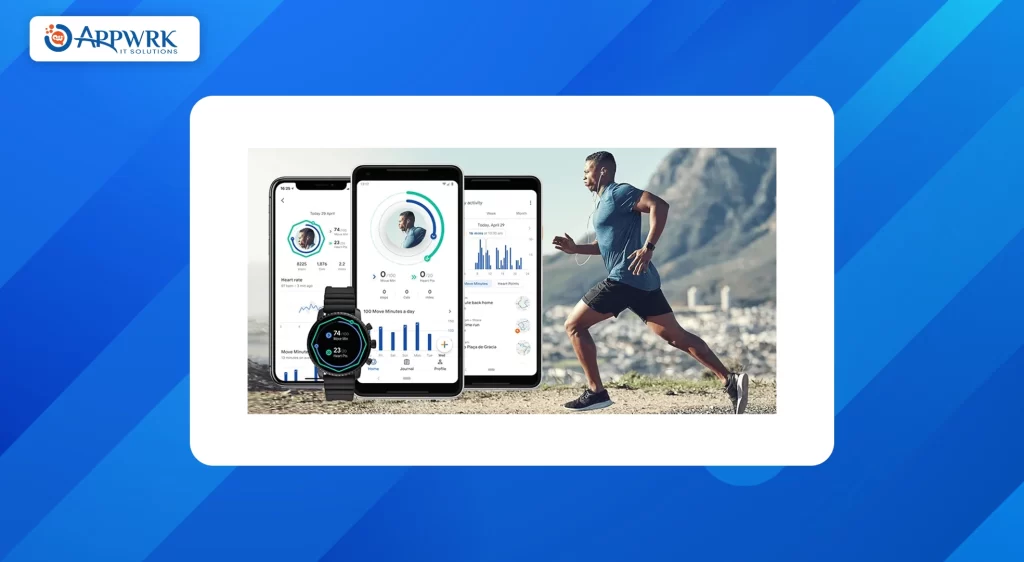
Additionally, selecting the right tech stack and development team can ensure a high-performing, scalable, and secure app. By prioritizing continuous improvement and user satisfaction, you can build a fitness app that not only meets the current demands of fitness enthusiasts but also evolves with the ever-changing fitness trends.
Remember, the journey to creating a successful fitness app is a marathon, not a sprint. With determination, patience, and a user-centered approach, you can cross the finish line with an app that resonates with and empowers users on their fitness journey.
FAQs
Creating your own fitness app involves several steps: conducting market research, choosing a platform, prototyping, choosing your tech stack, developing, testing, and finally, launching and maintaining your app. You should always consider hiring an efficient fitness mobile app development company to ensure a high-quality product.
The cost to develop a fitness app can vary greatly, depending on the complexity of the app, the number of features and platforms, and whether you outsource the development or do it in-house. However, If you want to develop a personal fitness app from India, the cost starts from $999. APPWRK IT Solutions, one of the leading mobile app development companies, has a proven track record of building successful mobile apps for clients worldwide, including those in the US, with the price starting from just $999! Contact us today for further assistance!
A fitness app should include features like user registration, personal profiles, activity tracking, goal setting, educational content, and social media integration. Advanced features might include geolocation, third-party device connectivity, and gamification elements to engage users.
There are several ways to monetize fitness apps: charging for the app (paid apps), offering in-app purchases (for premium features or content), adopting a freemium model (free download with optional paid subscription for advanced features), displaying ads, or promoting sponsored content within the app.
Starting a fitness business from scratch involves identifying your target market, choosing a business model (like personal training, a fitness app, or a gym), creating a detailed business plan, securing funding, developing your product or service, and marketing it to your audience.
The profitability of a fitness business can vary greatly depending on its type (app, gym, personal training), location, and how well it meets its target audience’s needs. However, with the global fitness and health club industry generating over $80 billion in revenue per year, there’s significant potential for profitable ventures.
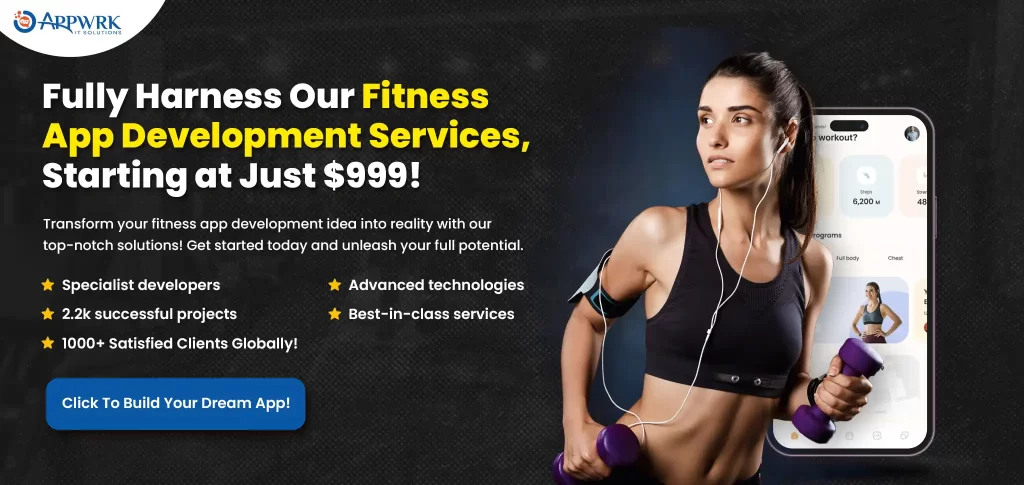
About The Author
